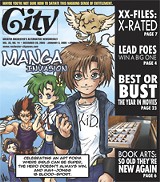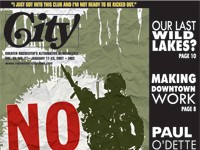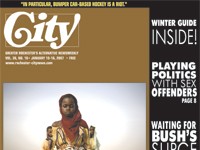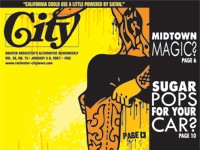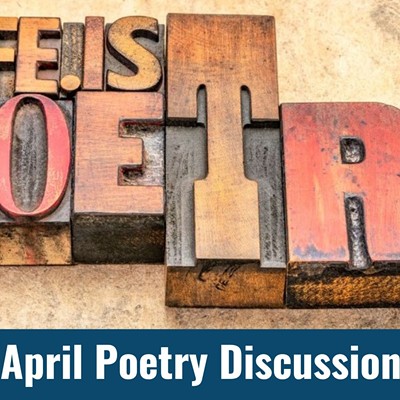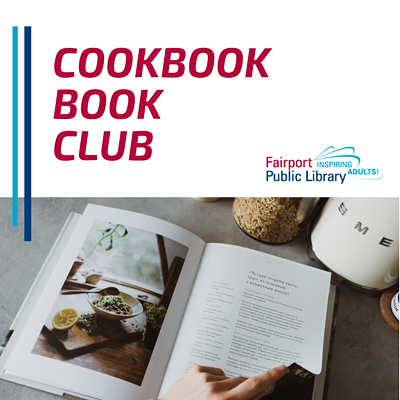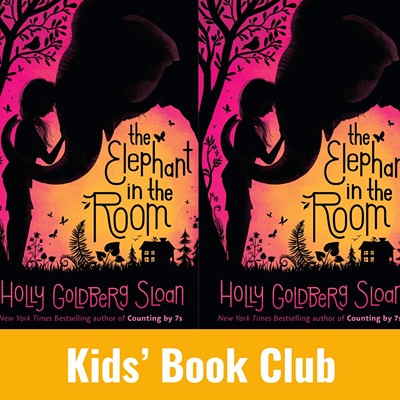Manga invasion
Celebrating an art form where girls can be super, the hero doesn't always win, and mah-jongg is blood-sport
By Craig Brownlie[
{
"name": "500x250 Ad",
"insertPoint": "5",
"component": "15667920",
"parentWrapperClass": "",
"requiredCountToDisplay": "1"
}
]
Only when you have sat in an automobile overflowing with college students (and their various odors and idiosyncrasies) for five hours can you truly understand obsession. In the age of the Internet, satellite dishes, and free shipping, what could possibly consume anyone enough to submit to the travails of such bone-jarring interstate journeys?
Until recently, you could say the word "manga" (Japanese for comics) and count on blank stares. These days, manga paperbacks fill rows at bookstores. Book sale reports showInu-yasha and Naruto making runs at the crown long held by Calvin and Hobbes and Get Fuzzy. Manga popularity has even encouraged one pair of local entrepreneurs to open a dedicated store --- after making the aforementioned trek one too many times.
"[I]n Hiroshi Hirata's samurai comics, with their direct, serious art style, I find a nostalgia for the kami-shibai of old, and a sensibility in the manner of the violent warrior prints of the late Edo period." --- Yukio Mishima (Japanese traditionalist and writer, better known nowadays in the West for his ritual suicide in 1970)
Hiroshi Hirata, Osamu Tezuka, and their fellow mangaka are the inheritors of a long artistic history in Japan. A thousand years ago, Buddhist monks were producing cartoon-like drawings satirizing other clergy and the nobility. In the 17th and 18th century, woodblock printing techniques led to mass production of story-telling pictures on scrolls, arguably the original comic books. The most popular prints were ukiyo-e, the "Floating World" pictures recently on display at the MemorialArtGallery.
The arrival of American comic strips in bound collections a little less than a century ago led to the production of thick monthly Japanese magazines collecting whatever comics were available. Even so, pre-1945 most of the artwork bears little resemblance to the stylistic conventions now associated with manga.
That would all change with the artistic emergence of a medical student who preferred Walt Disney and Max Fleischer.
Paging through Buddha by Osamu Tezuka is revelatory, like hearing the Beatles for the first time or eating seafood fresh off the boat in a place where that means something. The art varies from exquisite landscapes to elongated caricatures. Like Citizen Kane, the artist took the opportunity to explore the possibilities of black and white. The 3000-page tale offers the same labyrinthine experience as the lengthiest Russian novel. Buddha is a manga masterpiece created by the originator of the medium. This could never be a comic book produced by the American entertainment machine.
"People talk about [Tezuka] as the 'father,' [and] he was in a lot of ways," says Joanne Bernardi, director of the Film and Media Studies Program and associate professor of Japanese at the University of Rochester. "He was the one who introduced this new style. It caught on. It fed into a whole lot of social and cultural ethos at the time. It completely meshed with the whole idea of technology outracing and outpacing and undermining humanity. The fact that there had been this atomic bomb and this traumatic experience in Japan that was due to technology. The bomb really seems to infect popular culture, at least. It definitely overshadows other aspects about the war."
Sitting on her parents' sofa in the early '60s, Prof. Bernardi was on the frontlines as the first Japanese animations entered American family rooms on Saturday mornings. "[Tezuka] really did make a big change with Astro Boy," she says. "Astro Boy was his flagship character. To our American consciousness, he was the only one exported."
"There was a young girl sitting beside me.... [F]or nearly the whole time since we had left Ueno Station she had been reading a thick comic book. The girl rose, put her comic down, and walked the length of the car to the toilet. A green TOILET OCCUPIED light went on, and while that light burned I read the comic. I was instructed and cautioned. The comic strips showed decapitations, cannibalism, people bristling with arrows like Saint Sebastian, people in flames, shrieking armies of marauders dismembering villagers, limbless people with dripping stumps, and, in general, mayhem. The drawings were not good, but they were clear. Between the bloody stories there were short comic ones and three of these depended for their effects on farting: a trapped man or woman bending over, exposing a great moon of buttock and emitting a jet of stink (gusts of soot drawn in wiggly lines and clouds) in the captors' faces. The green light went off and I dropped the comic. The girl returned to her seat and, so help me God, serenely returned to this distressing comic." --- Paul Theroux, The Great Railway Bazaar
Ignoring the fact that he seems to feel all right touching his fellow passenger's stuff, Theroux does accurately describe the contents of the common manga weekly, in many ways not too far removed from Mad Magazine or a Hollywood Western. On the other hand, "There's also this idea that the violence and sex in anime --- this is today --- that seems to be blown out of proportion," Bernardi reminds us. "That's been a much bigger impediment to [adults] appreciating anime. The kids don't bother with [worrying about] it."
In manga, graphic storytelling is a form of communication unlimited by topic: Genius Idiot, Ajihei the Cook, Fighting MahJongg, Chronicle of a Ninja Military's Accomplishment, Sabu the Pin Artist, BloodsprayMahJongg Tiles, Enema Rock Climbing, No-Panty MahJongg With the Tables Turned, Tale of Genji, Kid Cop, Diary of a Sentimental Tomboy, and Wild Rider MahJongg Tiles at Sunrise. Despite a remarkable reliance on the violent possibilities inherent in mah-jongg, the very fact that there are multiple successful series about American football, the Japanese stock exchange, and the trauma of new mothers debuting at their local playground speaks to a format that has attained a significant degree of universality.
For clarity's sake, the primary manga taxonomy is shonen (boys') and shojo (girls'), carried on in the US with the two most popular magazines: Shonen Jump and Shojo Beat.
"Shonen Jump titles are about kids who try really hard and succeed," says Luke Morgan, co-owner of a Henrietta shop called Hammergirl Anime. "American comics are overwhelmingly targeted to the teenage and college male market. Manga is a medium as opposed to a genre. On our shelves right now, I can think of comics that are targeted toward 40-year-old salarymen to elementary school girls to a cooking channel in a book to political discourse to anything. Trying to categorize what manga is about is saying, so how would you describe film? There are so many different types."
Stylistically, manga is also different, Morgan continues.
"Unlike American comics, manga is scene-oriented and American comics are action-oriented," he says. "A good example of the scene versus action: In American comics when people are talking at the breakfast table, they will have a picture of the person talking. In a Japanese comic, they'll have a picture of the tea with the steam coming off of it. That sets the scene for what's going on. It has a much more expansive feel."
"What's so wonderful about manga is the stories aren't conventional like many American graphic novels," says Elizabeth Kovach, president of the RIT Anime Club. "They're unique plots with characters who seem to run much deeper than most from the US. It's hard to truly define, but I loved anime and manga when I was a kid because it was different. The hero didn't always win, sometimes people got hurt, or died. That was completely different from what was on TV or in comic books available to me. It's still very true to this day and you'll see that some of the best American graphic novels are influenced by Japanese Manga."
As it turns out, Rochester is a hotbed of manga interest. The RIT Anime Club is "the largest Anime Club on the East Coast," says Kovach.
"They are quite big --- one of the main reasons we stayed in Rochester," adds Morgan.
For their part, Morgan and Gabrielle Varry took their investment dollar and put it where their interests lay.
"We found ourselves often driving quarterly to Toronto, New York City, or even New Jersey to anime stores to shop," Morgan says. "And between us and the people who went with us, because it was a good number of people when we'd drive to these places, we'd spend a lot of money there. So, we decided that we would try to open our own store."
They have a shop in the JeffersonPlaza, just west of West Henrietta. The flat-screen television hanging by the door shows anime to anyone interested. Manga merchandise lines the walls where DVDs and books don't fill the floor space. The coups de grace though are the Pachinko machines in the back. Unlike their brethren in the homeland, these machines are purely for amusement.
For folks who want to dip their toes in the manga ocean, an anime convention may be the perfect place to start. Morgan offers this description: "Usually a convention is a weekend event that attracts anywhere between 3000 and 60,000 people. They feature guests both from Japan and America; dealers set out their wares; they have industry panels, specific panels about shows; a number of contests; cosplay where people dress up."
Rochester hosts at least one convention on a smaller scale.
"Tora-Con is our annual convention," says Kovach. "In the spring of 2005 we beat all the odds and nearly 300 people came out to see what it was about. It is a one-day Anime Convention that is very family- and student-friendly. We have all the elements of a larger convention including screenings, panels, cosplay contest, artist alley, and dealer's room. Planning is already in the works for April 29, 2006."
A new group, Rochester New York Otaku, has recently formed and they are hoping to stage their own convention in the next year (www.rochecon.com).
Manga is better
We consulted a committee of the newest generation of manga-maniacs. They've been raised on Pokemon, Sailor Moon, Hamtaro, and Hello Kitty and live at a time when manga is in their public library and anime is on their television. Our komikku coffee klatch consisted of: Duncan, 11; Rose, 11; Aaron, 9; and Tess, 9.
City: So, let's talk a little about manga.
Tess: Cool.
Rose: Yes!
Tess: It rocks!
Aaron: It thoroughly rocks!
Tess: It's confusing when you have to read it backwards, but you get used to it.
Rose: I think it's sort of like American comics, except you read it right to left, instead of left to right.
Aaron: They've got chibi!
Rose: They've got a lot more variety. I don't know for sure, but all I've seen of American comics, they've been like...
Tess: Superheroes.
Rose: Yeah. And this has got different things. You've got ninjas. You've got demons. You've got people going back in time. I think comic books and manga are different. Because comic books, most people think of magazines. Manga, you think of novels.
Aaron: Yeah, books.
Tess: All the American comics that I read are male superheroes that aren't defeated and they're never defeated and they're great and mighty. I'd rather read about real fighting (bow and arrows and swords and stuff), not like superpowers (where you can lift anything). That's boring. I haven't read any American comics that are about female superheroes. They're always Superman and Spiderman. The Fantastic Four have one girl.
Duncan: I think the manga is better, partly because I like the style more. And also there is a better storyline. It's not just sold for publicity, like some way to get money like a lot of American comics are. The people who draw manga actually think up a good storyline. They don't have different storylines throughout the comic. The person either makes it come to a close or they just keep making it. They just keep on going.
It's more like you're reading 50 books of it to come to an actual conclusion which is about four chapters per book. Not like just three for Superman and it takes a little bit less for one. You're getting one chapter whereas in manga you get four. It's like you get more out of it and it actually follows a storyline. You don't have bloop and bloop and bloop --- three comics for one set of stuff and then another three for a completely different story and then you're teleported somewhere else. It's just got a better setup to it.
Rose: American comics are usually about superheroes and there's not very much variety. With manga, you've got everything. And it's not based on stories completely that have already been done.
City: Who's your favorite character?
Rose: In Inuyasha, it would probably be Sango or Miroku. Sango is a female who is a demon exterminator and she's got this big, huge boomerang that she can actually use. She comes from the village of demon exterminators. You first encounter her where her brother has been taken over by the evil guy named Miroku. And her brother kills her father and everybody else. And while this is going on, their village is being attacked by other demons. So, everybody is killed except....
Tess:Sango.
Rose:Sango. So, I think that's really cool.
Aaron: Oh, yeah!
Rose: And then she's got a demon pet that looks like a two-tailed cat demon that starts out really small and cute and it can get bigger.
Rose: And then there's Miroku who is a Buddhist monk with questionable morals.
Tess: Very questionable morals.
Rose: 'Cause he's got a curse that was inflicted upon his grandfather called wind tunnel which is this hole in his left hand.
Tess: Right.
Rose: Yeah, right, okay. So, if he unleashes it, it can suck anything in, except for these poison wasps. So, once he gets old enough, the thing will swallow him up which happened to his grandfather and father. So, he has to have a baby to pass on the line. So, every time he comes across a beautiful woman, he asks her to bear the baby. It's kind of funny because they always reject him.
Aaron:Kakashi from Naruto and the AzumangaDaioh biting cat.
Tess: I like Kikyo. She died and then she was brought back to life again and then she almost died and then she got brought back to life again. She died again and got back to life again. She sort of keeps dying and then being brought back to life.
Rose: She should be dead like three times.
Tess: She's a priestess and she hates Inuyasha.
Rose: They kind of have a romantic background.
Aaron:Eeehhh....
Tess: They used to like each other, but then she thought that he did something that was really bad, so she killed him. Well, she put a hundred-year curse on him.
Duncan: I have very many favorite characters. My first one of them is Naruto.
Aaron: Gahh!
Duncan: You haven't read Volume 29. As the story progresses, he gets better. You know that lightning thing on his hand?
Aaron: What lightning thing?
Rose: You've read beyond everybody, okay?
Duncan: It's in Volume 4.
Aaron: I'm on Volume 3.
Duncan:Ohhh, he gets really strong and powerful. I also like Orphen from Orphen. He's a sorcerer but he was trained by the leader of the Tower of Fangs which is where the sorcerers train. He's more powerful really than any other person at the Tower of Fangs, but he's on work-for-hire because he's broke.
Recommended reading
Manga is available these days in most general bookstores, fine libraries, comic book shops, and a few specialty outlets. Local aficionados had many, many suggestions. These are the cullings. For more suggestions, enter any library or shop and stand around near the manga looking dumbfounded.
Classifying any of these tales within a genre may be helpful, but no fairer than pigeonholing any work of art. For instance, the ultra-violent Hellsing contains moments of laugh-out-loud humor.
Humor
What's Michael?byMakoto Kobayashi: rotating stories about cats in every imaginable permutation
AzumangaDaioh by Kiyohiko Azuma: manga Mary Tyler Moore and friends in high school; a great example of the Japanese comic strip
Action Adventure
Gon by Masashi Tanaka: exquisite artwork effective without text details, the escapades of an undersized dinosaur in the natural world
Bleach by Tite Kubo: "a boy and his family who can see the dead and they are recruited by the Grim Reaper to hunt down wayward ghosts" (Luke Morgan of Hammergirl Anime)
Naruto by Masashi Kishimoto: ninjas, ninjas, ninjas
Romance
Fruits Basket by Natsuki Takaya: "Who knew that a story about a cursed family that turns into animals of the Zodiac when hugged by a person of the opposite sex could be so sad and deep at times?" (Elizabeth Kovach, RIT Anime)
Marmalade Boy by WataruYoshizumi: more romance that you can shake a stick at
Historical
Buddha by Osamu Tezuka: the life of Siddhartha retold with the addition of imagined characters; serialized in the 1970s in Japan
Apocalypse Meow by Motofumi Kobayashi: "It is sure to stick with you long after the latest angsty robot fighters, battle monsters, and teen dramas have been replaced by the next generation of the same stories." (comicbookresources.com)
Lone Wolf and Cub by Kazuo Koike and Goseki Kojima: epic samurai adventure
Barefoot Gen by KeijiNakazawa: the first manga translated into English; riveting
Science fiction
Astro Boy by Osamu Tezuka: the sine qua non, the beginning, folks; read it and love it for what it is
Akira by Katsuhiro Otomo: "striking and poignant tale of a child psychic in post-World War III Tokyo" (Mental Floss)
Nausicaa of the Valley of the Wind by Hayao Miyazaki: before Spirited Away and all his other wonderful films, Miyazaki made manga, and dandy manga at that
X/1999 by CLAMP: the female artists' collective CLAMP has been a major force in manga for the past decade; this is their most often recommended work
Fantasy
Inu-yasha by Rumiko Takahashi: "I was just flipping through it and I said, 'What is this?' And then I come upon this caption that says 'The Smell of Death' on it." (komikku coffee klatch)
Full Metal Alchemist by Hiromu Arakawa: "a very, very good comic about loss and acceptance... it's rated Teen for its theme --- people die and people are sad" (Hammergirl Anime)
Speaking of Hammergirl Anime, manga
-
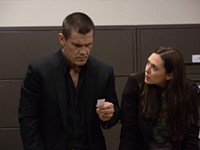
"Oldboy"
Dec 4, 2013 -

Manga invasion
Dec 28, 2005 - More »
Latest in Featured story
More by Craig Brownlie
-
The Chet Gecko series
Jan 10, 2007 -
The H.P. Lovecraft Historical Society
Dec 27, 2006 -
"The Pirates in an Adventure with Communists"
Dec 20, 2006 - More »
